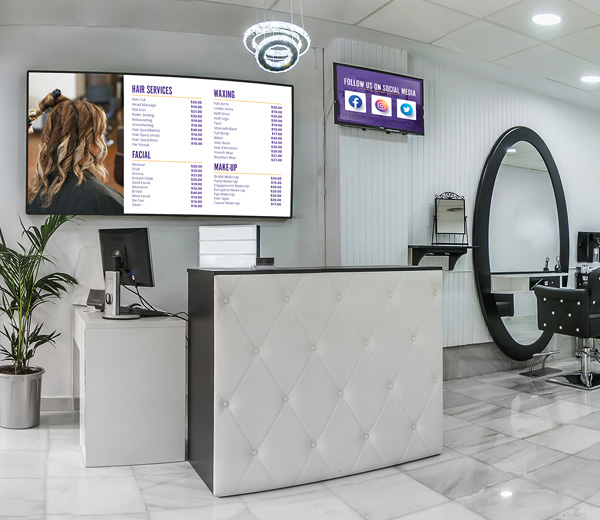- Know Your Business Costs (Your Break-Even Point)
Before setting prices, you need to know how much it costs to keep your salon open.
- Fixed Costs (Overheads): These don’t change with the number of clients. Examples:
- Rent/lease
- Utilities (electricity, water, gas, internet)
- Wages/salaries for receptionists or admin staff
- Insurance
- Software subscriptions (booking system, accounting)
- Marketing/advertising
- Cleaning and laundry
- Variable Costs: These rise with more clients. Examples:
- Colour products, shampoos, treatments, foils, gloves
- Refreshments (coffee, tea, biscuits)
- Towels or disposables
Add these together to know your monthly running costs.
- Work Out Your Revenue Capacity
This tells you how much income your salon could generate at full efficiency.
- Available Service Hours: How many hours are you (and your team) available to see clients?
- Example: 3 stylists × 35 hours/week = 105 bookable hours/week.
- Multiply by the average number of weeks open per month (usually ~4.33).
This is your maximum billable time.
- Calculate Your Hourly Cost to Operate
Now divide your monthly overheads by your total billable hours.
- Example:
- Monthly overhead = $20,000
- Billable hours = 450
- Cost to operate = $44/hour (before profit).
- Calculate Each Service Cost
Each service uses two things: time and products.
- Example (Full Head Foils, 2 hours):
- 2 hours × $44/hour = $88
- Product cost = $25
- Total base cost = $113
- Add Profit Margin
Your salon isn’t just about breaking even — you need profit to:
- Reinvest in training, new equipment, and marketing
- Cover sick leave/holidays
- Pay yourself properly as an owner
- Build a buffer for quiet weeks
Industry standard profit margins:
- 20–40% for most services
- Higher (50–70%) for short, product-light services (like fringe trims, blow-drys, men’s cuts)
- Lower (15–20%) for long, product-heavy services (like balayage, keratin smoothing)
Example:
- Base cost (Full Head Foils) = $113
- Add 30% profit margin = $147
Round up to $149–$155
- Factor in Stylist Levels
Clients expect different pricing depending on stylist experience. Common structures:
- Junior Stylist: Lower pricing (entry-level, building speed/skill).
- Senior Stylist: Standard pricing.
- Creative Director / Master Stylist: Premium pricing.
Same service, different price point. Example:
- Women’s Cut:
- Junior = $55
- Senior = $75
- Director = $95
This gives clients choice and helps staff growth.
- Check Your Market Position
Pricing isn’t just about costs — it’s about branding.
- Budget/Value Salon: High volume, lower prices, fast service.
- Mid-Range Salon: Balanced price + service + experience.
- Premium/High-End Salon: Higher prices, luxury environment, highly trained staff, elite products.
Decide where you want your salon to sit.
- Use Packages & Upselling
- Create service bundles (e.g., “Cut + Colour + Treatment” package priced slightly lower than booking separately).
- Upsell add-ons (toner, deep conditioning, gloss finish).
- Offer memberships (weekly blow-dry club, seasonal colour packages).
- Retail products can add 10–20% extra revenue if promoted properly.
- Psychological Pricing
- Avoid flat “round numbers” (instead of $100, make it $99 or $105).
- Price “hero services” strategically (e.g., slightly lower blow-dry price to get clients in the door, then upsell).
- Use tiered menus (good, better, best packages).
- Review & Adjust Regularly
- Product costs and wages increase — so must your prices.
- Review every 6–12 months (many salons increase annually by 3–8%).
- Communicate price increases positively (position them as investing in quality products, training, and customer experience).
Formula to Remember:
(Hourly Cost × Service Time) + Product Cost + Profit Margin = Service Price
